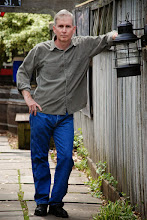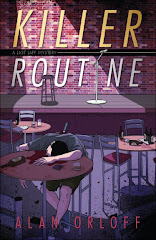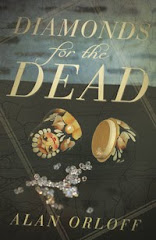
Writing a novel is similar.
In science fiction and fantasy circles, it's called world building, which is quite accurate when you're talking about creating new and wondrous worlds, in the future or in far-away galaxies. But I'll apply the same terminology to novels in other genres as well. In any fictional story, you--the writer--are building a world for your characters. You are the designer. You are the one pulling the strings. It's all in your hands (with perhaps a little help from your editor).
For my upcoming mystery series, I've begun constructing my little "world." The first book's already written, so many of the basic facts are set. But there's still a lot left to be determined for future books.
No matter if the series runs two books or twenty, things in my world need to be consistent. You can't have an orphan in one book have parents drop by for a visit in the next (unless you've got one whale of an explanation!). Characters' physical and psychological traits need to stay the same (or at least evolve realistically), and their histories and patterns and likes/dislikes can't change like a politician's mind after the latest poll.
Let's face it. We've all read series where immutable things change from book to book. Maybe the protagonist's eye color goes from brown to blue or his great aunt becomes fifteen years younger or his best friend's name changes from Stan to Steve (or Susie). When things like that happen, it makes me think the author is lazy or careless (or both), and it certainly doesn't make me want to read more books in the series.
My Midnight Ink pal, Jess Lourey, gave me some great suggestions about compiling a series "bible." She recommended dividing a notebook into thirds, and using one part to catalog all the characters, another for maps/descriptions of physical locales, and a third for tracking character arcs across books. Then, all your information is in one handy place, ready to be accessed. Hey, it sounds good to me!
So now I need to collect my notes, give the first book another read, and bring it all together.
Then I can start working on the sequel.
I can't wait!





















6 comments:
That is a GREAT idea that Jess had.
All I have is a cheat-sheet. And so I do still make mistakes. The editors correct me, but I'm sure they're rolling their eyes. I'll have to try her bible.
Elizabeth
Mystery Writing is Murder
The series "bible" sounds like a very helpful tool. I've read a few books where names have changed and even occupations.
I'm sure there's software somewhere to help organize the bible. What, afterall, would life be without software???
Best Regards for a great weekend. Galen.
Imagineering Fiction Blog
I would think one would have to keep a record if one is writing a series. Every television show has a 'bible' to keep its characters and plots straight.
Elspeth
Elizabeth - It's a good thing editors exist.
Mason - It's really bad when stuff changes within a single book!
Galen - Isn't there Microsoft World Builder suite, complete with action figures?
Elspeth - Hey, maybe my new series will become a TV series. That would be cool (and I'd already have the bible).
Thanks, Alan, for those great ideas! I love the idea of a notebook, and I think I'll steal it : ).
Post a Comment